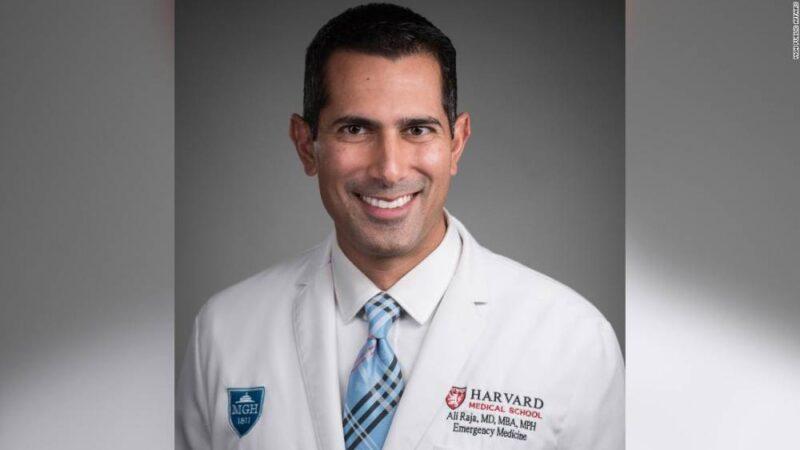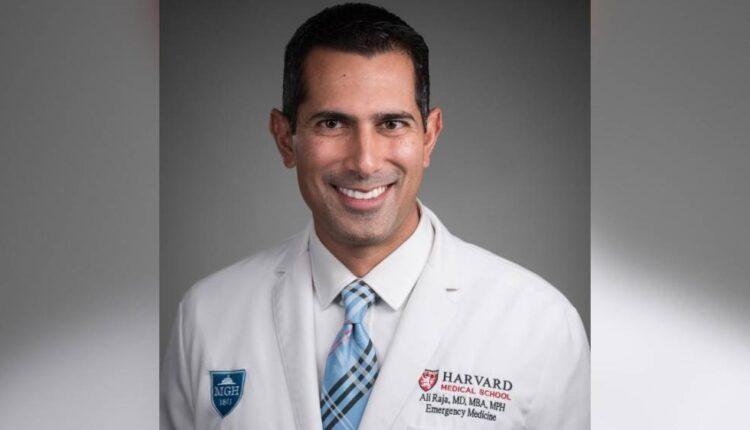New York (CNN Business)Ali Raja spends his nine-hour shifts in the emergency room at Massachusetts General Hospital treating gunshot wounds, sprained ankles, heart attacks and now a growing number of coronavirus cases.
But before the emergency physician steps on to his long shift and after he’s done, he’s on Twitter, usually for at least an hour a day.Raja, who is also the executive vice chair of Mass General’s department of emergency medicine and a Harvard Medical School assistant professor, has been using Twitter to share information about coronavirus, also known as Covid-19, including personal protective equipment for medical professionals and the importance of social distancing, to his 57,000 followers, and to learn from other medical professionals.
“Right now, Twitter is the best way to get medical information out,” Raja told CNN Business. “Because of the fact that everybody gets a voice [on social media], it’s very easy for alarmist messages to pick up steam. We have to be constantly vigilant about trying to get that panic under control and spread a different message.”In a sign of the times, doctors are effectively waging a two-pronged fight against coronavirus: one part takes place in overcrowded hospitals and the other takes place on noisy social media platforms as they work to combat what the World Health Organization has declared an infodemic with accurate, authoritative voices. All of that means doctors, some of whom were once reluctant to embrace social media, are wading deeper into platforms that are rife with fake news, unproven medical advice and mass panic. Read More”Social media is the disease and the cure. It is responsible for the dissemination of misinformation as much as it needs to be a tool for repairing that,” said Rick Pescatore, an emergency room physician and public health expert in the Philadelphia area, who is active on Twitter and Facebook and has treated Covid-19 patients. “It’s incumbent upon physicians, who want to get real information out there, to meet these patients where they are — and that’s social media.”

Ali Raja, an emergency physician at Mass General, uses Twitter to share coronavirus information. “We have to be constantly vigilant about trying to get that panic under control and spread a different message,” Raja told CNN Business.
Fighting coronavirus misinformation where it lives
Perhaps nowhere is this shift more striking than on TikTok, a short-form video platform beloved by teens that is best known for lip syncing, dance routines and comedy skits. In one TikTok video viewed more than 416,000 times, a registered nurse named Miki Rai does a choreographed dance involving a lot of hand motions as facts about Covid-19 flash on the screen, such as how long the virus stays on different surfaces. In another TikTok video, set to soothing elevator music, Dr. Rose Marie Leslie demonstrates proper handwashing: Wet hands. Lather up. Start washing for 20 seconds. Scrub under your nails and between fingers. Rinse. Leslie, a resident physician specializing in family medicine at the University of Minnesota Medical School, created a TikTok account about a year ago, with the aim of reaching a younger demographic with health education information. Soon after coronavirus cases started emerging, she began creating TikToks about the issue. Now, she works to debunk myths about the virus for her more than 500,000 followers. “People have so many questions and they’re looking at tweets or random Instagram posts that aren’t necessarily from valid sources,” Leslie said. “My real goal was to take the messaging specifically from trusted sources and get it out to the broader community and also put it in a way that’s palatable, that’s quick nuggets of information presented in a short way.” @drleslie
BUSTING MYTHS ABOUT THE NOVEL CORONAVIRUS AKA COVID19. ##myth ##myths ##facts ##truth ##real ##stayhome
♬ original sound – ripdiknherspleen She and other doctors are banding together through social media to settle on a framework of verifiable sources and information to share with the public. Some doctors are also reportedly turning to social media to develop Covid-19 treatments.”[We] are all kind of talking to each other and coming up with unified messaging related to Covid-19 that’s all coming from the trusted sources that we look to, like the World Health Organization, so that whenever somebody is looking through TikTok or YouTube, we can make sure that we’re providing a unified message and getting the same information out to everybody,” Leslie said. In some sense, this is a return to one of the earlier goals of social media platforms like Twitter: providing accurate public health information. The account for the Centers for Disease Control and Prevention Twitter was one of the first to be verified on the platform. And yet, while some doctors on the platform have a blue checkmark next to their names on Twitter, others — including Raja and Pescatore — still do not.
Doctors overcome their fear of social media
The coronavirus pandemic could accelerate a shift in the medical community toward being more comfortable and active on social media after a long period of being apprehensive about it. Some doctors, like Raja from Mass General, had privacy and safety concerns and worried that “people might find me outside the emergency department.” Others worried about the impact it might have on their careers. “There are concerns about if my hospital is going to smack me down for posting about this or that,” said Pescatore. “But as we all become more comfortable with it, I think more and more people are engaging with it.”On Twitter, a community known as #MedTwitter, has emerged, where medical professionals share information, discuss new research and learn from each other. Now, such communities are more critical than ever. “The best place to learn is #MedTwitter,” Raja said, who estimates that thousands of doctors are part of it.The doctors are not alone in their online fight against coronavirus. Other health groups, including the World Health Organization, the British Red Cross, the World Economic Forum, and the IFRC are posting Covid-19 information to TikTok, collectively amassing millions of followers. These organizations also have accounts on other social media platforms, including Twitter and YouTube.
You're notified of another really sick patient coming in. You rush over. They're also extremely sick, vomiting. They need to be put on life support as well. You bring them back. Two patients, in rooms right next to each other, both getting a breathing tube. It's not even 10am yet
— Craig Spencer MD MPH (@Craig_A_Spencer) March 24, 2020 But again and again, around the world, first-hand accounts from doctors have proven to be particularly powerful in shaping how the crisis is perceived, both inside and outside the medical community.
In one Twitter thread retweeted more than 131,000 times last week, Craig Spencer — the director of global health in emergency medicine at New York-Presbyterian/Columbia University Medical Center — shared insight into his typical day on the frontlines of coronavirus in the emergency room, including gearing up in a gown, goggles, and mask to encounter sick patients and later wiping down all personal belongings like his wallet, phone and badge. His account led to plenty of press coverage. “You might hear people saying it isn’t real. It is. You might hear people saying it isn’t bad. It is. You might hear people saying it can’t take you down. It can. I survived Ebola. I fear #COVID-19. Do your part. Stay home. Stay safe. And every day I’ll come to work for you,” Spencer tweeted.
Source: edition.cnn.com

